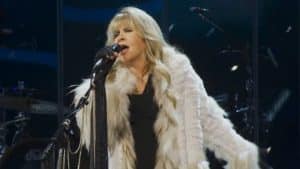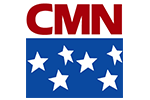10 Classic Rock Acts That Released Music Under a Fake Name

via Un sélénien / YouTube
Sometimes famous musicians choose to use fake names when writing or releasing songs. They do this for different reasons—either to stay anonymous, test their work without the weight of their name, or just for fun. Many classic rock artists used aliases over the years, and some fans didn’t find out until much later. These aren’t just stage names—they’re hidden credits and secret songwriting identities. Here are ten well-known acts that released music under different names.
Bob Dylan: Jack Frost
Bob Dylan used the name Jack Frost when he produced several of his albums in the 2000s. This alias showed up on the credits for albums like Love and Theft, Modern Times, and Together Through Life.
Dylan never publicly explained the meaning behind the name. Fans often link it to his cool, distant production style during those years. Jack Frost appeared quietly in liner notes, but it was no secret among serious followers of his work. The music still had Dylan’s familiar sound, even if the producer name was different.
Paul McCartney: Multiple Aliases
Paul McCartney is known for using many fake names, including Bernard Webb, Apollo C. Vermouth, Paul Ramon, Clint Harrigan, and Percy ‘Thrills’ Thrillington. Each name had a different purpose.
Bernard Webb was used in the 1960s when McCartney wrote a song for Peter and Gordon, trying to see if the song would succeed without his famous name. Percy ‘Thrills’ Thrillington was the credit for an orchestral version of the Ram album. McCartney liked to play with identity, keeping fans guessing.
The Rolling Stones: Nanker Phelge
The Rolling Stones credited several early songs to “Nanker Phelge,” a made-up name they used for group compositions. It represented songs where all band members contributed rather than just Mick Jagger and Keith Richards.
This name appeared on B-sides and lesser-known tracks from the 1960s, like “The Under Assistant West Coast Promotion Man.” The group created the name from an inside joke about making a silly face called a “nanker.” It was a way to equally share credit during the band’s early days.
Prince: Multiple Aliases
Prince often released music under names like Jamie Starr, The Starr Company, Joey Coco, Alexander Nevermind, and Christopher. He used these names mostly to write songs for other artists, such as Vanity 6, The Bangles, and Sheena Easton.
“Manic Monday,” recorded by The Bangles, was written by Prince under the name Christopher. He wanted the focus on the songs and the performers, not on himself. His many aliases helped him stay behind the scenes while still shaping the sound of the 1980s.
Neil Young: Bernard Shakey
Neil Young used the name Bernard Shakey when directing and producing films. His alias appeared in the credits for Rust Never Sleeps and Greendale, among others. It was tied to his creative work in film and video.
Young didn’t use the name for music, but his film work was always closely connected to his sound. Bernard Shakey allowed him to create freely without tying everything to his stage name. Fans of his work know the alias well, especially when it comes to his visual projects.
U2: Passengers
In 1995, U2 released the album Original Soundtracks 1 under the name “Passengers.” The album was experimental and included musician Brian Eno. It was different from U2’s usual style and not meant to be taken as a full band release.
The idea behind using Passengers was to try something less commercial. Bono still sang lead vocals, but the album didn’t follow a traditional format. Using a fake name gave them room to take creative risks without affecting the U2 brand.
George Harrison: L’Angelo Mysterioso
George Harrison used the alias L’Angelo Mysterioso when he played guitar on Cream’s song “Badge” in 1969. He wasn’t officially credited under his real name on the record.
There were legal reasons for using the fake name, as Harrison was under contract with another label. Eric Clapton confirmed later that Harrison wrote part of the song and played rhythm guitar. The mysterious name added to the song’s legend among fans.
Elton John and Bernie Taupin: Ann Orson and Carte Blanche
Elton John and Bernie Taupin used the names Ann Orson and Carte Blanche on the 1976 single “Don’t Go Breaking My Heart.” The song was recorded as a duet with singer Kiki Dee.
The playful aliases appeared in the songwriting credits. Ann Orson was Elton’s pseudonym, while Carte Blanche belonged to Taupin. They used these names only once, but it added a touch of humor and helped the song stand out in Elton’s long list of hits.
John Lennon: Multiple Aliases
John Lennon sometimes used names like Dr. Winston O’Boogie, John O’Cean, Reverend Fred Gherkin, Mel Torment, and Dwarf McDougal. These odd names showed up on solo records and liner notes.
Dr. Winston O’Boogie was his most common pseudonym, used especially when working with Ringo Starr. Lennon enjoyed using humorous or surreal names, reflecting his interest in wordplay and satire. These aliases became part of his creative style after The Beatles broke up.
Ringo Starr: Richie Snare
Ringo Starr used the name Richie Snare when he appeared as a session drummer. This fake name appeared on John Lennon’s Plastic Ono Band album.
Richie was a shortened version of his real name, Richard Starkey, and “Snare” referred to the drum. It was a simple way to give credit without drawing attention. While he didn’t use it often, the name Richie Snare gave him some freedom in studio work.



















